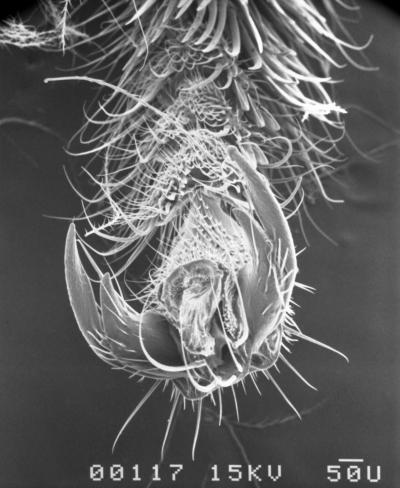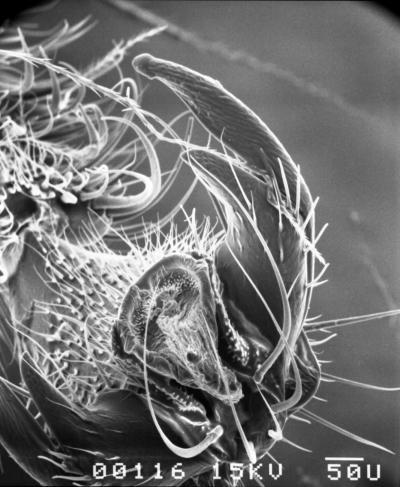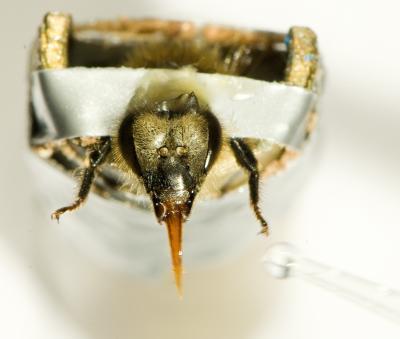Insects taste through hair-like structures on the body called sensilla. Sensilla contain receptor nerve cells, each of which is sensitive to a particular substance.
In insects like the honeybee, sensilla are found on the mouthparts, antenna and the tarsi – the end part of the legs. Honeybees weigh information from both front tarsi to decide whether to feed, finds a new study on the ability of honeybees to taste with claws on their forelegs, which reveals details on how this information is processed.
Using hundreds of honeybees, sugary, bitter and salty solutions were applied to the tarsi of the forelegs to test if this stimulated the bees to extend or retract their tongue – reflex actions that indicate whether or not they like the taste and are preparing to drink.
Results revealed that honeybee tarsi are highly sensitive to sugar: even dilute sucrose solutions prompted the bees to extend their tongue. Measurements of nerve cell activity showed that the part of the honeybee tarsus most sensitive to sugary tastes is the double claw at its end. Also, the segments of the tarsus before the claws, known as the tarsomeres, were found to be highly sensitive to saline solutions.

A honeybee claw under an electron microscope. Credit: de Brito Sanchez et al. / Frontiers in Neuroscience
"Honeybees rely on their color vision, memory, and sense of smell and taste to find nectar and pollen in the ever-changing environment around the colony," says Dr. Martin Giurfa, Director of the Research Centre on Animal Cognition at the University of Toulouse. "The high sensitivity to salts of the tarsomeres and to sugar of the tarsal claws is impressive given that each tarsus has fewer sensilla than the other sense organs.
"The claw's sense of taste allows workers to detect nectar immediately when they land on flowers. Also, bees hovering over water ponds can promptly detect the presence of salts in water through the tarsomeres of their hanging legs."

This photo shows a honeybee claw under an electron microscope. Credit: de Brito Sanchez et al. / Frontiers in Neuroscience
But what if honeybees receive contradictory information, for example, about tasty sucrose from the right foreleg, but about water or distasteful caffeine from the left?
The central nervous system of honeybees weighs this information from both sides, but unequally: input from the side that is first to taste something tasty or distasteful counts for more. For example, if a bee first tasted sucrose on one side, she would typically extend her tongue and subsequently ignore less attractive tastes on the other.
But if the order was reversed, she was around 50% less likely than normally to extend her tongue for sucrose.

A honeybee extending her proboscis.
Credit: de Brito Sanchez et al. / Frontiers in Neuroscience


